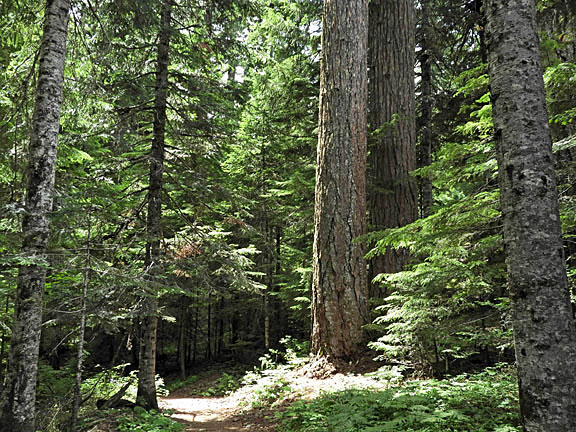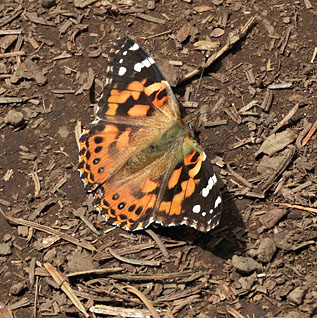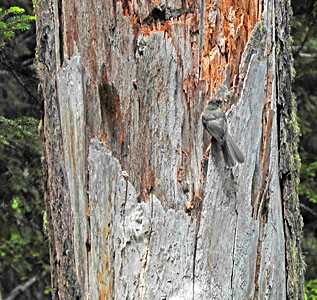|
Wandering Thoughts in an Old-Growth Forest
|
| HOME | PROTECTION | NATURE | PLAN YOUR VISIT | FAQ | JOIN/DONATE | ABOUT |
| For more about old-growth Douglas-fir forests go to Old Growth and Douglas-fir tree. |
| Why is an old-growth forest wonder full? |
 |
There are many ways to see the wonder of an old-growth forest. Start with the recognition that the term "old-growth forest" is a misnomer. Yes, there are old trees in an old-growth forest. But there are also middle-aged trees, and seedlings. An old-growth forest is an all growth forest. An old-growth forest is diverse, not just in age but in the variety of trees, and in the diversity of plant and animal life that an old-growth forest can support. |
| Look again at an old-growth forest. When you do, you can see other life: younger trees alongside the old trees, ferns and brush making the ground green; a variety of life. |
|
|
 |
 |
An old growth forest is self-sustaining. When a tree falls, it dissolves into the forest, sometimes also serving as a nurse log, giving its nutrients to new trees. The carbon of the trees is absorbed into the ground, not lost to the atmosphere. |
 |
 |
 |
Many varieties of fungi help recycle the forest. |
| The lichen that only appears in old-growth forests, called Oregon lettuce (Lobaria oregana) is
another wonder of the forest. When it lives on the trees it does no
harm to the trees, but it gathers nitrogen from the air. Then when it falls to the forest floor, the fixed nitrogen becomes fertilizer for the next generation of trees and undergrowth. |
 |
|
|
 |
|
 |
|
|
| For more about old-growth Douglas-fir forests go to Old Growth and Douglas-fir tree. |